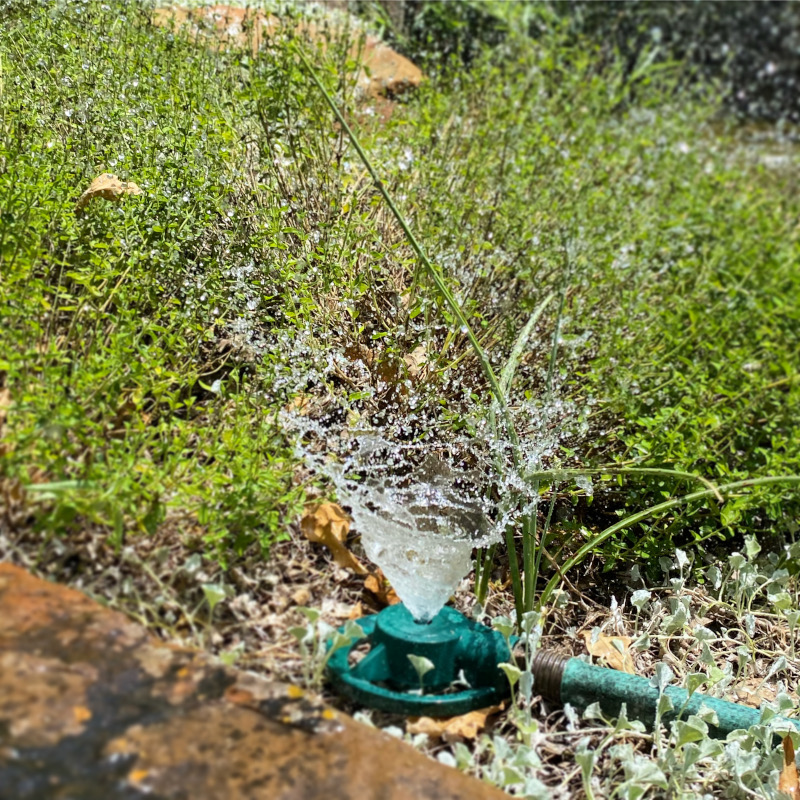
During our summer months we approach temperatures in the triple digits. Potted plants, plants being established, and even some older established plants should receive more water during our hotter months.
Most important items to remember when watering:
-Never water the leaves, soil drench only
-Long and slow is better than short and fast
-Moisture meters are your friend
-Water until there is runoff, wait, and then water again
A big factor of water permeability is the soil type. There are three different soil types: Clay, sand, and Silt. Since we have a more clay like soil here in Central Texas I will focus on this soil type. Clay soil does not take water as fast as silt or sand so it must be applied at a slower rate over a longer period of time.
When watering plants in the ground it is recommended to pull the mouth of the hose about 6 inches away from the base of the plant, turn on really low so it is just a slight trickle and leave in that area for 30 mins to 4 hours depending on the plant and how big it was at time of planting. The top 2-4 inches can get dry but underneath this area is what matters. It should feel like a moist sponge below the top of the soil. If it is still too moist do not water that day but if it is drier than a wrung out sponge to go ahead and water. Moisture meters are a great tool at checking moisture levels below the soil (available in our store).
When watering plants in pots it is recommended to use a watering wand as the water comes out in a nice even spray that should not damage the soil level or plants. It is recommended to water until you see water coming out of the bottom of the pot. The topsoil can remain dry but underneath the top 2-4 inches is what matters. Using a moisture meter is strongly recommended to check moisture levels. If the soil underneath the top layer is wetter than a moist sponge you should not water. If it is drier than a moist sponge it is time to water.
Everyone’s soil properties and conditions are very different. Even areas in your own yard can differ from one another. Probing multiple areas in your yard with a moisture meter or even digging up areas after watering to see how much water has penetrated through will help you better understand how much water your plants are getting.
Most grasses like around an inch of water every week. To help determine if you have hit this mark you can get an empty tuna can and lay it in your lawn next time you water. Tuna cans are about an inch in height so if you have filled up half during one watering session then you know you only need to water one more time this week to make it an inch.
If your plant looks wilted in the morning when temperatures are still low then it is safe to assume the plant is not receiving enough water. Plants wilting in the middle of the day is very normal, we call it mid-day melt (it affects the people too). Plants breathe through holes in their leaves called stomata. When temperatures get to high the plant responds by shutting down and waiting until temperatures lower to breathe again. This adaptation helps plants to survive in high temperatures while others would go dormant or just die off.

You must be logged in to post a comment.